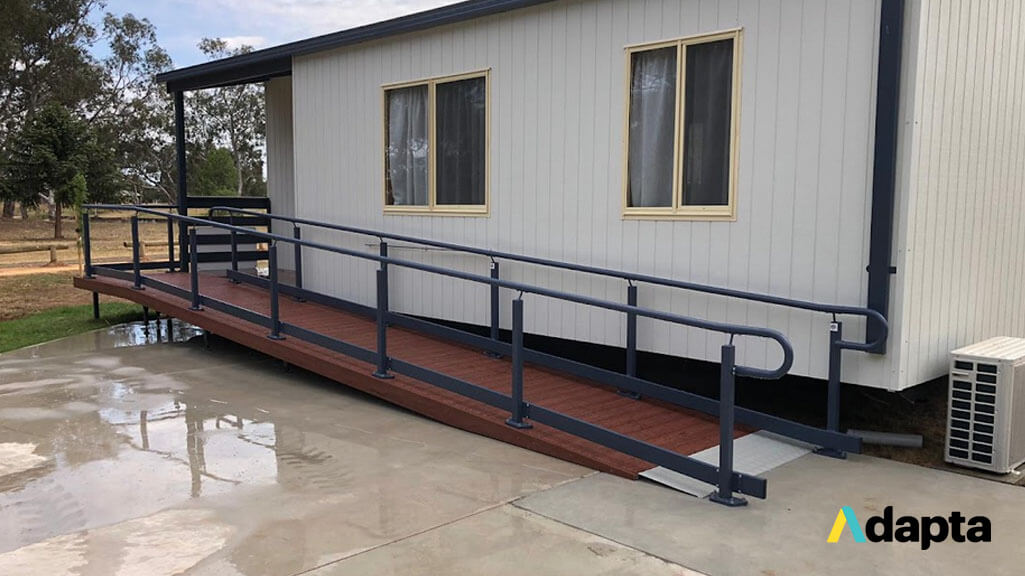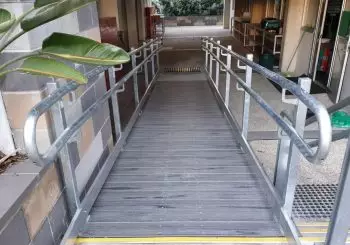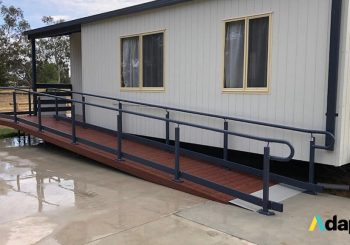When it comes to installing a wheelchair ramp, many home and business owners tend to go with a DIY route instead of availing the services of professional ramp builders and installers. Although this method usually works well for individuals with extensive carpentry and construction experience, it’s generally not advisable to DIY a ramp, especially if it will be primarily used by people with mobility issues.
So, if you’re planning on building and installing your own ramp, you should probably abandon this project and enlist the help of a reputable company. Aside from avoiding costly repairs, doing so can also prevent accidents, mishaps, and even serious injuries in the future.
Ramps Are Not Slides
In most DIY projects, many people tend to think that building a ramp is as simple as putting a flat hard surface over a set of stairs to provide wheelchair access. However, a board placed over steps is a slide and not a ramp. People who use this type of makeshift ramp are at risk of injuring their selves.
A ramp that’s properly constructed takes into consideration several factors, such as the gradient of the incline and the pitch of the stairs. This ensures that the ramp isn’t too steep to allow wheelchair users to safely and easily access it.
Use Of Unsafe Materials
Another factor that can cause serious injuries is the type of materials used in DIY ramps. Usually, people often use a simple wooden plank or metal sheet for their projects. Unfortunately, without non-slip properties and other features, these materials can cause wheelchairs to accelerate uncontrollably, which can lead to accidents.
Aside from using non-skid surfaces, professional builders also make sure that the materials they use can withstand various environmental conditions, such as rain and snow. Doing so ensures that the ramp can last for a long time.
Missing Safety Feature
In order to lower the cost of the DIY project, people often choose not to add certain features to their makeshift ramps, such as the handrails. However, handrails play an important role as they help individuals with mobility issues safely traverse ramps. They also prevent them from falling in case they lose their balance.
Professionally-built ramps are equipped with handrails that are sturdy enough to support the weight of people. Also, they follow the correct measurements regarding their height and distance from each other to accommodate people who use wheelchairs and other mobility aids.
DDA Compliance
In addition to safety, probably one of the biggest issues related to DIY ramps is if it complies with local laws. In Australia, the Disability Discrimination Act (DDA) makes it illegal to discriminate against individuals due to their conditions.
According to this law, owners and operators of public areas and structures, such as schools, educational institutions, parks, hospitals, commercial establishments, and government offices, should ensure that these places can be accessed by everyone. This means installing access ramps for the disabled.
The DDA also requires wheelchair ramps to follow certain design specifications. Unfortunately, not all DIY ramps follow this provision, which can result in legal issues.
If you’re planning on installing a professional-grade ramp for your home or place of business, then don’t hesitate to get in touch with Adapta. Aside from getting an accessibility ramp that perfectly matches your preferences and available space, you’ll have peace of mind knowing that your ramp is DDA compliant and can safely accommodate the needs of people with disabilities.



